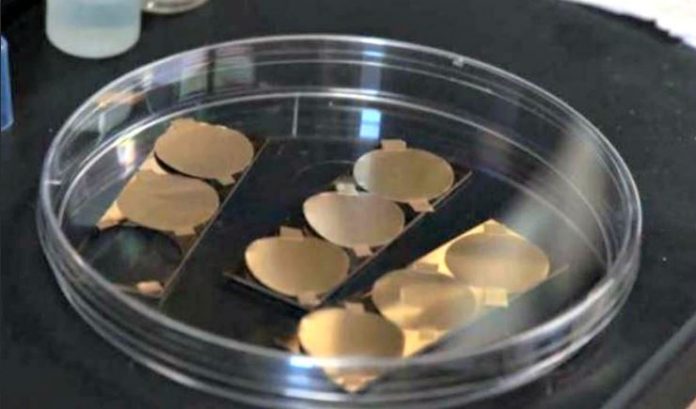
May 31 (UPI) — Nanorobots that are about 25 times smaller than the width of a human hair have been developed to remove harmful bacteria and toxins by swimming through the bloodstream.
Engineers at the University of California San Diego hope one day their proof-of-concept method will offer a safe and efficient way to detoxify and decontaminate biological fluids. Their findings were published Wednesday in the journal Science Robotics.
“The idea is to create multifunctional nanorobots that can perform as many different tasks at once,” co-first author Berta Esteban-Fernandez de Avila, a postdoctoral scholar at UC San Diego, said in a press release. “Combining platelet and red blood cell membranes into each nanorobot coating is synergistic — platelets target bacteria, while red blood cells target and neutralize the toxins those bacteria produce.”
Researchers said their ultimate goal is not to use the nanorobots to treat MRSA infections but generally to detoxify biological fluids. They are planning to eventually test them in live animals.
The researchers built the nanorobots by coating gold nanowires with platelet and red blood cell membranes.
They can travel up to 35 micrometers per second in blood powered by ultrasound.
Researchers used the nanorobots to treat blood samples contaminated with MRSA and their toxins. These blood samples had three times less bacteria and toxins than untreated samples after five minutes.
“By integrating natural cell coatings onto synthetic nanomachines, we can impart new capabilities on tiny robots such as removal of pathogens and toxins from the body and from other matrices,” said Dr. Joseph Wang, a professor in the Department of NanoEngineering at the UC San Diego Jacobs School of Engineering. “This is a proof-of-concept platform for diverse therapeutic and biodetoxification applications.”
Researchers separated entire membranes from platelets and red blood cells, and applied high-frequency sound waves to fuse the membranes together. They coated the hybrid membranes onto gold nanowires using specific surface chemistry.
The coating protects the nanorobots from biofouling, or proteins collecting on the surface of foreign objects and preventing them from operating normally.
The team is also developing a way to make nanorobots out of biodegradable materials instead of gold.





